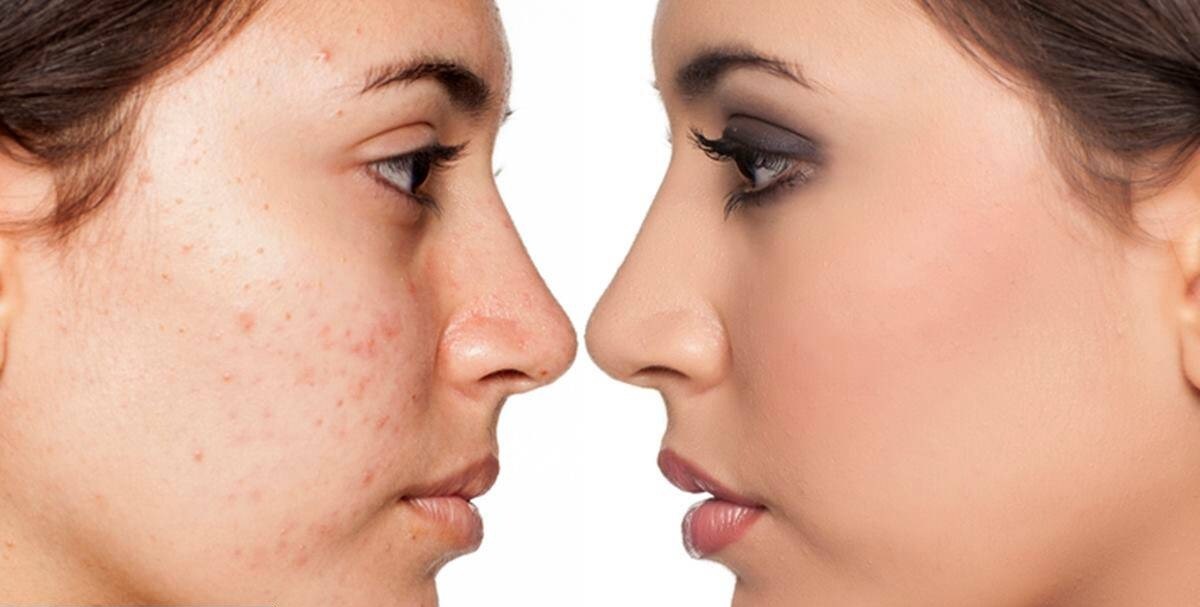Acne, medically known as Acne Vulgaris, is a skin disease that involves the oil glands at the base of hair follicles. It commonly occurs during puberty when the sebaceous (oil) glands come to life – the glands are stimulated by male hormones produced by the adrenal glands of both males and females. While acne is not dangerous, it can leave disfiguring skin scars. Human skin has pores (tiny holes) which connect to oil glands located under the skin. The glands are connected to the pores via follicles – small canals. These glands produce Sebum, an oily liquid. The sebum carries dead skin cells through the follicles to the surface of the skin. A small hair grows through the follicle out of the skin. Pimples grow when these follicles get blocked, resulting in an accumulation of oil under the skin.
Pimples commonly appear on the face, back, chest, shoulders and neck.
In simple terms; skin cells, sebum and hair can clump together into a plug, this plug gets infected with bacteria, resulting in a swelling. A pimple starts to develop when the plug begins to break down.
Acne – aka Acne Vulgaris – is a pathology affecting the oil glands of the skin.
Your first encounter with acne occurs typically during puberty – hormonal flux stimulates oil production by the sebaceous glands of the skin, resulting in sebum build up and acne formation. These oil glands are located just under the skin where one’s pores are seen. This oil is intended to carry dead cells to the surface of the skin via the hair follicles, as well as to lubricate the hair and skin externally. It is when this pore gets blocked that the trouble starts.
In general, acne forms when:
- Pores are blocked
- Sebum production rate exceeds its rate of release through the blocked pore
- Bacteria feeds on the collected sebum and multiply
- Inflammation from the resultant infection exacerbates the problem
This produces:
- Non-inflammatory comedones: Whiteheads and blackheads, which can later form
- Inflammatory acne: Papules, pustules, nodules and cystic acne
While acne is itself is not dangerous, its presence can be distressing. On top of the pesky bumps and persisting red marks, acne can leave more permanent sequelae – scars. As such, acne should be managed as early as possible, and understanding how acne forms is the first step to compliance to treatment measures.
Why Acne Keep Returning?
Think of the structure of the hair follicle like that of a tree – the hair follicle feeds on nutrients (and is affected by hormones) that are brought to it by the blood – like a tree feeds on the water in the ground through its roots. This is the body’s (systemic) effect on the single hair follicle; hormonal changes during puberty or menstrual periods affect change to the follicles at this level, and is one of the methods in which acne can effectively be controlled.
Once it receives its nutrients and signals, the hair follicle produces sebum at the sebaceous gland, much like a tree photosynthesising and growing on its own. For some reason or other, pores through which the hair sprouts in the skin gets blocked by dead skin and the sebum accumulates within the follicle. This is the next area that can be targeted in acne treatment – managing the tree itself.
As can be seen, the organ that is the skin is itself a living organ – it is in constant growth and renewal and as such, acne is too. Most treatments center around controlling and preventing further acne outbreaks, while some harsher forms of systemic therapies can permanently destroy sebaceous glands and eliminate acne.
How Can you Tackle This Problem?
Many factors are considered when management plans are formulated for acne control:
- Severity of acne
- Previous failed therapies
- Sex of patient and intention for pregnancy during treatment
- Sensitivity of skin
- Acceptance of possible underlying side effects of medications used for treatment
An ideal plan would:
- Have an effective outcome in as quick a time as possible
- Allow the patient to continue with their regular lifestyle
- Have as minimal side effects as possible
As your tolerance for any of the above factors might differ from another’s, plans should also be adjusted to suit expectations.
A holistic plan would involve:
- A systemic treatment, if necessary, to quickly and more permanently effect change on the oil glands
- Interval clinical treatments to stun oil glands and kill P. Acne
- Continued topical therapy to re-acclimatise the skin
- Subsequent scar treatments to smoothen out the skin
Active Acne Treatment
Chemical Peels
Blue Light Acne Treatment (BBL & Omnilux)
Laser treatments
AGNES ACNE treatment
Read more about Active Acne Treatment here
Treatment for Acne Scars
Poorly controlled Acne often causes disfiguring scars. Scars can take different forms (rolling scars, depressed scars, pitted scars etc.) which often require a combination of treatments including subcision, dermal fillers, TCA CROSS treatments, Laser resurfacing (with Erbium or Fractional CO2 lasers) and others.

